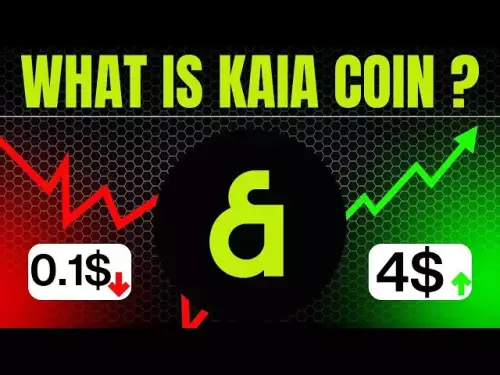 |
|
 |
|
 |
|
 |
|
 |
|
 |
|
 |
|
 |
|
 |
|
 |
|
 |
|
 |
|
 |
|
 |
|
 |
|
Articles d’actualité sur les crypto-monnaies
USDT vs. USDC: A Comprehensive Comparison of Leading Stablecoins
Apr 29, 2025 at 03:30 am

Stablecoins have become an essential component of the cryptocurrency ecosystem, providing stability amidst volatility. Among the most prominent stablecoins are USDT (Tether) and USDC (USD Coin), which are designed to maintain a close value to the U.S. dollar. While both stablecoins share similarities, they also possess distinct features and have encountered unique challenges throughout their journeys.
What Are Stablecoins?
Stablecoins are a category of digital assets that aim to remain stable in value over time. They are typically pegged to stable reserves, such as traditional fiat currencies (e.g., U.S. dollar, euro, yen), or commodities (e.g., gold). The goal of stablecoins is to provide the technological benefits of cryptocurrencies, such as rapid global transactions, borderless access, and transparency, without the extreme price volatility that characterizes assets like Bitcoin or Ethereum.
By offering a stable medium of exchange, stablecoins help bridge the gap between traditional finance and the digital economy. They are used by traders to quickly move funds between different cryptocurrencies without converting to fiat, minimizing exposure to sudden market swings. Businesses and individuals can use stablecoins for payments, remittances, and even payroll, taking advantage of faster settlement times and lower fees compared to traditional banking systems.
In decentralized finance (DeFi), stablecoins serve as a fundamental building block, enabling lending, borrowing, and yield-generating activities with reduced risk. As blockchain technology continues to grow, stablecoins play an increasingly important role in supporting a more accessible and efficient financial ecosystem.
Overview of USDT (Tether)
Launched in 2014 by Tether Limited, USDT is the first and most widely adopted stablecoin in the cryptocurrency market. It operates across multiple blockchain networks, including Ethereum, Tron, EOS, Algorand, and others, offering users flexibility and fast transaction capabilities. With a market capitalization of approximately $150 billion, USDT dominates stablecoin trading volumes and serves as a crucial liquidity source across centralized and decentralized exchanges worldwide.
Traders and businesses rely heavily on USDT to move funds quickly without the risks associated with price volatility in traditional cryptocurrencies. The company behind USDT, Tether Limited, operates under the umbrella of iFinex Inc., the same parent company that owns the Bitfinex exchange. Paolo Ardoino currently serves as the CEO of both Tether and Bitfinex, a role he assumed in 2023 after several years as Chief Technology Officer (CTO).
Ardoino has positioned Tether not just as a stablecoin provider but also as a significant player in the broader crypto infrastructure ecosystem. Tether often emphasizes its commitment to transparency, although the company has faced ongoing scrutiny from regulators and media regarding its reserve practices.
USDT claims to maintain its value through full backing by reserves. These reserves historically included a mixture of assets such as U.S. Treasury bills, commercial paper, secured loans, corporate bonds, and even precious metals. However, due to regulatory pressure and public demand for greater transparency, Tether has shifted its reserve composition heavily toward more conservative holdings, primarily short-term U.S. Treasury bills and cash equivalents.
Tether publishes regular reserve reports, although these are attestations rather than full audits, which leaves some questions open regarding the granularity of the reserve breakdown. Despite past controversies, USDT remains a cornerstone of the global crypto economy, providing users with a simple, liquid, and stable digital dollar alternative.
Overview of USDC (USD Coin)
Introduced in 2018, USD Coin (USDC) is one of the leading stablecoins for users who prioritize transparency, regulatory assurance, and maximum safety. The stablecoin is issued by the Centre Consortium, a partnership initially founded by Circle and Coinbase, two of the most recognized names in the American fintech and cryptocurrency industries.
Like USDT, USDC operates on multiple blockchains, including Ethereum, Solana, Algorand, Stellar, and others, ensuring wide accessibility and fast transaction capabilities across different platforms. With a market capitalization of around $30 billion, USDC has positioned itself as the stablecoin of choice for institutions, DeFi applications, and users focused on compliance and security.
Circle, the principal issuer of USDC, has made regulatory compliance and transparency central to its business model. As a registered money services business (MSB) in the U.S., Circle is subject to ongoing oversight by financial regulators.
Recently, USDC became one of the first stablecoins to fully comply with the European Union’s Markets in Crypto-Assets (MiCA) regulation, further highlighting its commitment to a global and sustainable operating model.
In a joint venture with Coinbase, Circle created Centre to provide open-source governance for USDC and ensure the highest standards of transparency.
The stablecoin is backed 1:1 with U.S. dollar-denominated reserves held in a dedicated bank account and managed by an independent accounting firm. These reserves consist almost entirely of short-term U.S. Treasury bills and cash, offering users maximum confidence that
Clause de non-responsabilité:info@kdj.com
Les informations fournies ne constituent pas des conseils commerciaux. kdj.com n’assume aucune responsabilité pour les investissements effectués sur la base des informations fournies dans cet article. Les crypto-monnaies sont très volatiles et il est fortement recommandé d’investir avec prudence après une recherche approfondie!
Si vous pensez que le contenu utilisé sur ce site Web porte atteinte à vos droits d’auteur, veuillez nous contacter immédiatement (info@kdj.com) et nous le supprimerons dans les plus brefs délais.
-

- XRP, Dogecoin et Ozak AI : une minute new-yorkaise sur les jeux les plus populaires de Crypto
- Oct 15, 2025 at 04:04 pm
- XRP et Dogecoin sont des incontournables du marché, mais Ozak AI fait tourner les têtes avec son approche basée sur l'IA et son potentiel de rendements massifs. Est-ce la prochaine grande nouveauté ?
-

- Service de tokenisation CRDB : révolutionner la finance en Tanzanie et au-delà
- Oct 15, 2025 at 04:02 pm
- Découvrez comment le service de tokenisation du CRDB transforme le secteur bancaire en Tanzanie, aux côtés des innovations en matière de monnaie numérique de la RBI et des informations sur la dynamique du marché de la cryptographie.
-

- Lancement du réseau principal du protocole Alvara : le jeton ERC-7621 révolutionne DeFi
- Oct 15, 2025 at 04:00 pm
- Le lancement du réseau principal d'Alvara Protocol introduit la norme ERC-7621, établissant une nouvelle référence en matière de gestion de fonds composable, transparente et décentralisée dans l'espace DeFi.
-

- Bitcoin, or et argent : confrontation avec les valeurs refuges en 2025
- Oct 15, 2025 at 04:00 pm
- L'or et l'argent se redressent dans un contexte d'incertitude économique. Bitcoin peut-il rattraper son retard alors que les investisseurs recherchent des valeurs refuges ? Un regard sur l’évolution de la dynamique en 2025.
-

- Sei Price Wobbles : la nervosité du déverrouillage des jetons et le risque de baisse – Guide du trader
- Oct 15, 2025 at 03:54 pm
- Le prix de Sei navigue dans les événements de déverrouillage des jetons et les risques de baisse. Découvrez les niveaux clés, les rebonds potentiels et ce que les traders regardent dans ce paysage volatil.
-

- Peter Brandt, Bitcoin et prévisions des investisseurs : naviguer dans les mers de la cryptographie
- Oct 15, 2025 at 03:54 pm
- Les idées du trader chevronné Peter Brandt sur la volatilité potentielle du Bitcoin et les perspectives baissières du XRP soulignent l'importance de la gestion des risques sur le marché de la cryptographie.
-

- Réglementation cryptographique au Kenya : une révolution des actifs virtuels en devenir ?
- Oct 15, 2025 at 03:48 pm
- Le Kenya est à l’aube d’une révolution cryptographique. De nouvelles réglementations sont sur le point de transformer le paysage des actifs virtuels. Cet article de blog explore ce que cela signifie pour le Kenya et l'Afrique.
-

- Crash éclair du marché de la cryptographie : frénésie de liquidation et angle énergétique du Bitcoin
- Oct 15, 2025 at 03:46 pm
- Le marché de la cryptographie a été confronté à un krach éclair avec des liquidations massives. Nous explorerons les événements clés, y compris le point de vue d'Elon Musk sur les fondements énergétiques de Bitcoin.
-

- Avalanche (AVAX) et l'achat de crypto : qu'est-ce qui est chaud en ce moment ?
- Oct 15, 2025 at 03:44 pm
- Le taux de combustion d'Avalanche monte en flèche, signalant une dynamique haussière. Mais AVAX est-il le meilleur achat de crypto actuellement ? Explorez des alternatives comme Blazpay et MoonBull.























!["SOREVILLE" par Zoogie 100% [1 pièce] "SOREVILLE" par Zoogie 100% [1 pièce]](/uploads/2025/10/15/cryptocurrencies-news/videos/soreville-zoogie-coin/68eef24487e4e_image_500_375.webp)
![Staking d'ATH : comment miser $ATH en octobre 2025 avec 523 % d'APY – [Guide étape par étape] Staking d'ATH : comment miser $ATH en octobre 2025 avec 523 % d'APY – [Guide étape par étape]](/uploads/2025/10/15/cryptocurrencies-news/videos/staking-ath-stake-ath-october-apy-stepstep-guide/68eef94d80903_image_500_375.webp)


































